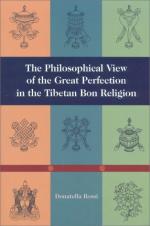|
This section contains 3,877 words (approx. 13 pages at 300 words per page) |

|
Until the 1980s, scholars took a threefold approach to the study of Tibetan religions. First, they used Tibetan materials to supplement Indian and Chinese materials; second, Western scholars were drawn by a fascination with Tibetan Buddhism itself; and third, they studied the numerous Tibetan texts completed since the 1970s by Tibetans who were living either in exile or in Tibet and China. Events and developments of momentous importance for research into the religious life of Tibet occurred during the twentieth century. These events drove some Tibetans into a Western-oriented study of their own religion, brought Western scholars into close contact with learned lamas, and drew scholarly attention to a very early period of Bon and Buddhism in Tibet, while almost simultaneously revealing contemporary practices with a precision and on a scale previously impossible for various political or geographical reasons.
The first event was the...
|
This section contains 3,877 words (approx. 13 pages at 300 words per page) |

|



